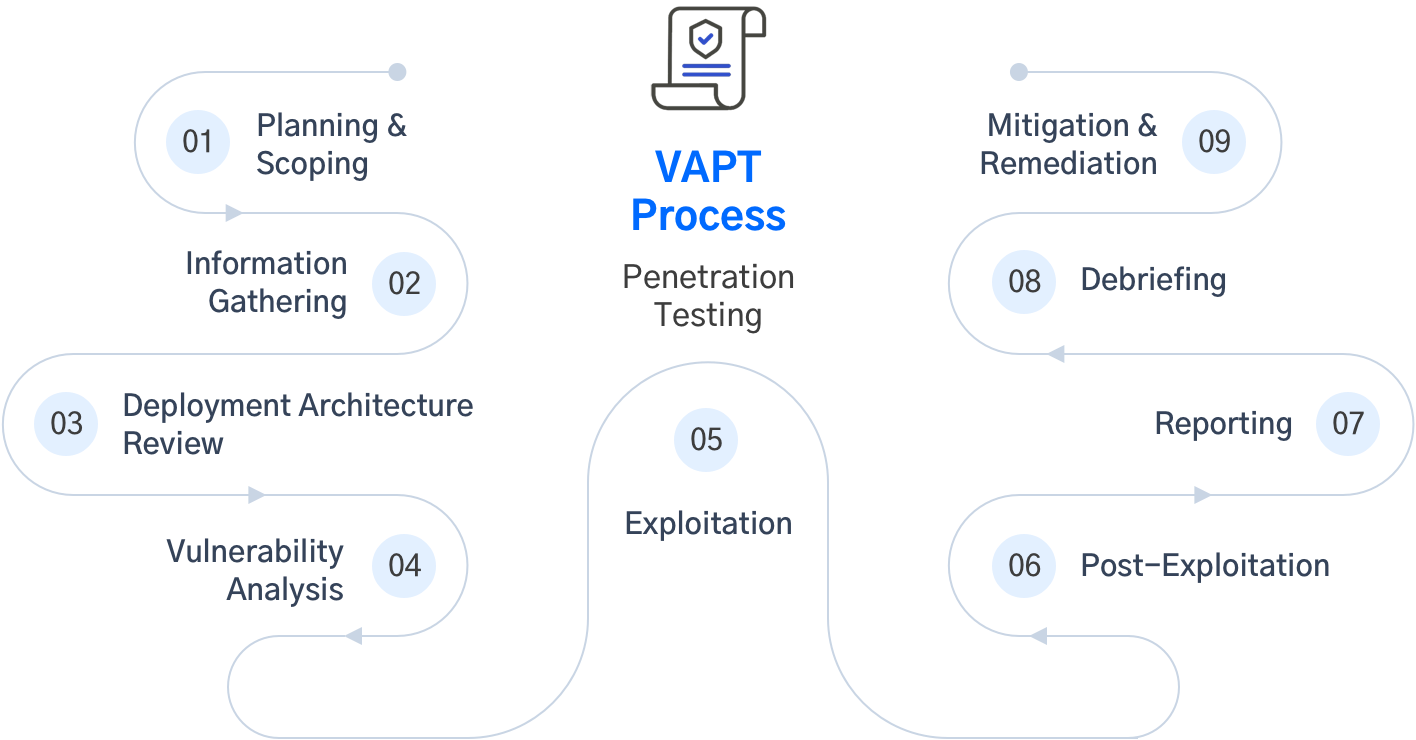The healthcare industry heavily relies on digital solutions to streamline processes and enhance patient care. However, this reliance on technology makes healthcare organizations vulnerable to cyber threats and data breaches. As patient data becomes more digitized, ensuring the security and integrity of healthcare applications becomes crucial. This case study presents how mitigation measures helped a US-based health tech company build a robust security posture for their healthcare web and mobile applications through a comprehensive vulnerability assessment and penetration testing (VAPT) initiative.
Client Overview
Our client, a leading healthcare technology provider in the USA, developed a web and mobile application to facilitate seamless communication and collaboration among healthcare providers, patients, and caregivers. This platform allows the secure transmission of electronic health records (EHRs), appointment scheduling, and virtual consultations.
Key Challenges
Cyberattacks in the U.S. healthcare industry cost more than $6 billion per year. These attacks disrupt patient care and expose millions of sensitive records during each breach. Fixing these breaches is expensive, averaging $1.93 million per incident. In addition, malicious actors take advantage of system vulnerabilities to compromise IT systems. Considering the platform's extensive storage of personal data, securing the web and mobile applications against cyberattacks was crucial for our client. A few key challenges faced were -
- Uncover potential, unknown security weaknesses in web and mobile applications.
- Ensuring the patient information is adequately protected.
- Evaluate the effectiveness of existing security measures and controls.
- Ensuring compliance with healthcare data protection regulations like HIPAA and GDPR.

The Solution
The penetration testing revealed several critical and high-severity vulnerabilities, including inadequate encryption, input validation issues, and insecure storage of sensitive data in the mobile app. Additionally, some weak authentication mechanisms were identified in the web application using penetration testing tools.
Our VAPT professionals provided the health tech company with a detailed VAPT report outlining the findings and prioritizing the vulnerabilities based on their severity. Remediation recommendations were offered, including patching, updating configurations, and improving input validation mechanisms.
Penetration Testing Methodology:
The penetration testing was conducted following a well-defined methodology, which included the 9-step VAPT process.

Key Technical Implementations
Our VAPT services for the client involved several key technical implementations such as,
Web Application Firewall (WAF):
Recommended and implemented a WAF to provide an additional layer of security and protect against common web application attacks.
Encryption:
Enforced end-to-end encryption for data transmission, ensuring the confidentiality and integrity of sensitive data.
Multi-Factor Authentication (MFA):
MFA was implemented to enhance authentication security for both healthcare professionals and patients.
Access Control and Role-Based Permissions:
Established granular access control policies and role-based permissions to restrict access to sensitive data.
Regular Patch Management:
Provided guidance on establishing a robust patch management process to promptly address and remediate vulnerabilities.
Results and Impact
By conducting comprehensive penetration testing and promptly addressing the identified vulnerabilities, our VAPT services played a vital role in enhancing the security of healthcare web and mobile applications, mitigating risks, ensuring regulatory compliance, and instilling confidence in their user base. The implementation of recommended fixes improved data protection, reduced the risk of data breaches and strengthened compliance with regulatory standards.


